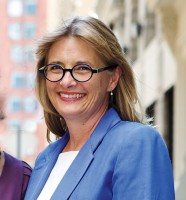Changes made to the city’s affordable housing guidelines could require developers with subsidized units to board homeless New Yorkers currently living in emergency shelters.
According to an updated marketing handbook quietly released by the city’s Housing Preservation and Development agency this week, developers whose buildings were developed under the 80/20 affordable housing program under the state’s 421a tax benefits could be forced to redesignate units set aside for community members and the disabled to city residents living in homeless shelters.
Units subject to redesignation include “community preference units,” “mobility disability set-aside units,” “hearing/vision disability set-aside units,” and any other housing set aside for prioritized groups. But under the new guidelines, those units could be “set aside as housing for households then residing in emergency shelter and referred by the City,” as long as they meet certain requirements.
“The set-asides for people with disabilities stand, and must be met, regardless of other preferences established within the program,” Wiley Norvell, a communications advisor for Housing and Economic Development with the de Blasio administration, told The Real Deal.
Alvin Schein, a real estate attorney for landlords, said he doesn’t believe HPD has the power to make the changes spelled out in the marketing guidelines.
“My view is it’s illegal,” Schein said. “It’s a major change in the law, or at a minimum, change in regulation.” He added that HPD has already begun contacting landlords about the modifications in the guidelines.
Representatives for HPD did not respond to multiple requests for comment on the updated marketing rules, nor did representatives from the Real Estate Board of New York. A representative for the New York State Association for Affordable Housing, a trade group for affordable housing developers, also did not return a request for comment.
After a torrent of criticism, Mayor Bill de Blasio in December unveiled a new outreach plan called “Home-Stat” to more aggressively address the city’s growing homelessness problem. His administration has also housed homeless families in motels and hotels, spending an estimated $50 million in the last year. The city has also increased set-asides in affordable housing projects for formerly homeless families, Norvell said.
On Wednesday, the city’s homeless population was tallied at more than 60,000 people, the highest in recorded city history.
Correction: a previous version of this article mischaracterized Alvin Schein’s work. In addition, which buildings are subject to the new rule have been clarified.
